 |
 |
 |
| |
Pre-Therapy Detection of Transmitted Low-abundance HIV-1 Resistance Mutation-containing Variants in Antiviral-na´ve Subjects and Implications for Subsequent Clinical Therapy Response
|
| |
| |
Reported by Jules Levin ICAAC 2011 Sept 17-20 Chicago
Lisa Ross1, Kathleen Squires2, Benjamin Young3, Edwin DeJesus4, Nicholas Bellos5, Daniel Murphy6, Henry Zhao1, Brian Wine1, Joseph Horton1, Mark Shaefer7
1GlaxoSmithKline, RTP, NC, USA; 2Thomas Jefferson Univ., Philadelphia, PA,USA; 3Rocky Mountain CARES/DIDC, Denver, CO, USA; Health Connections International, Amsterdam, Netherlands; 4Orlando Immunology Ctr., Orlando, FL, USA; 5SW Infectious Disease Assoc., Dallas, TX, USA; 6Clinique Medicale L'Actuel, Montreal, Canada; 7ViiV Healthcare, RTP, NC, USA
The ARIES investigators noted that low-level nonnucleoside mutations missed by standard genotyping may have an impact on response in a trial testing a nonnucleoside regimen, because nonnucleosides have a lower resistance threshold than protease inhibitors. In ARIES, though, "use of a boosted protease inhibitor through the first 36 weeks provided a high genetic barrier [to resistance]." As result, the researchers proposed, success of a boosted protease inhibitor regimen may depend more on factors such as adherence than on pretreatment low-level resistance.
ICAAC: "Ultradeep" Detection of Pretreatment Mutations Has Little Impact on Long-Term PI (Reyataz/r) Response - Written by Mark Mascolini - (09/19/11)
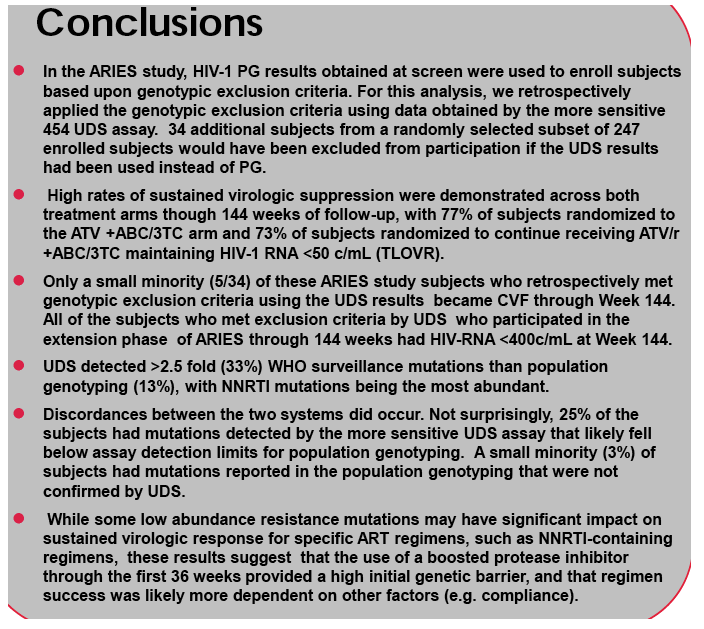
INTRODUCTION
Transmitted drug resistance detected by population genotyping (PG) can affect initial antiretroviral treatment (ART) response; however, the utility of detection of low-abundance resistance mutation-containing species is more controversial.
The ARIES trial utilized a treatment simplification strategy involving induction with a ritonavir-boosted protease inhibitor regimen followed by simplification (discontinuing ritonavir) in an HIV-1 infected, ART-na´ve patient population. This study, which was able to demonstrate the non-inferiority of atazanavir (ATV) to ATV boosted with ritonavir (ATV/r), both with abacavir/lamivudine (ABC/3TC) over 84 weeks following a 36 week induction period with ATV/r + ABC/3TC, and demonstrated sustained virologic suppression for subjects in both arms while minimizing some potential long-term ritonavir-associated adverse effects in the ritonavir-sparing arm.1,2 An extension of the study from 84 to 144 weeks was added to assess long-term efficacy and safety.
Subjects were excluded from enrollment in ARIES if pre-therapy population genotype contained mutations that would have significantly impacted response to either the abacavir/lamivudine combination or atazanavir. Ultra-deep sequencing (UDS) was used to detect low-abundance resistance mutation-containing species and determine, post-hoc, the clinical implications using samples from subjects enrolled in the ARIES study.
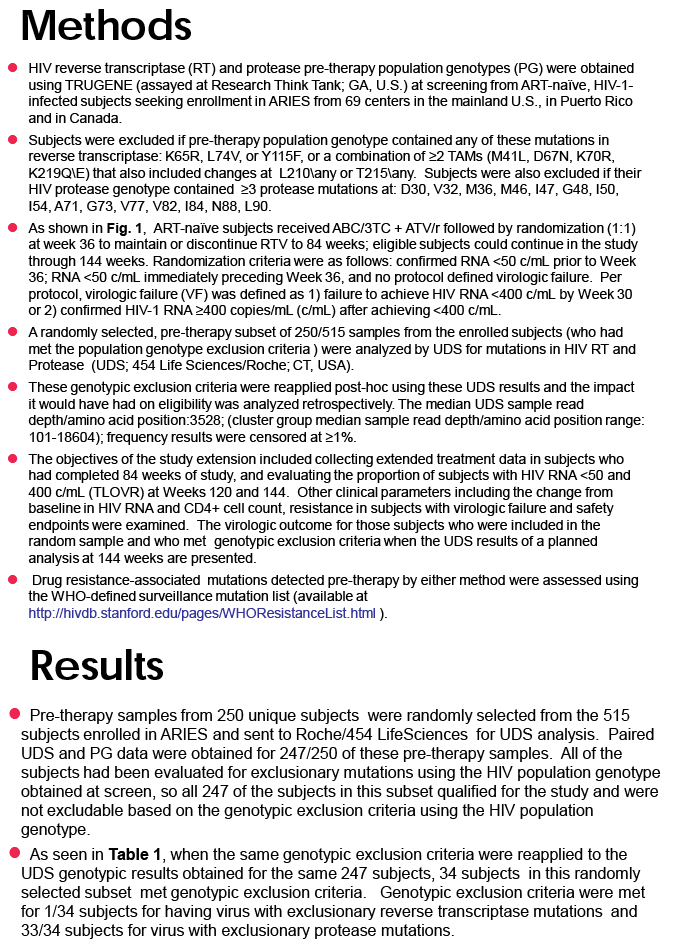
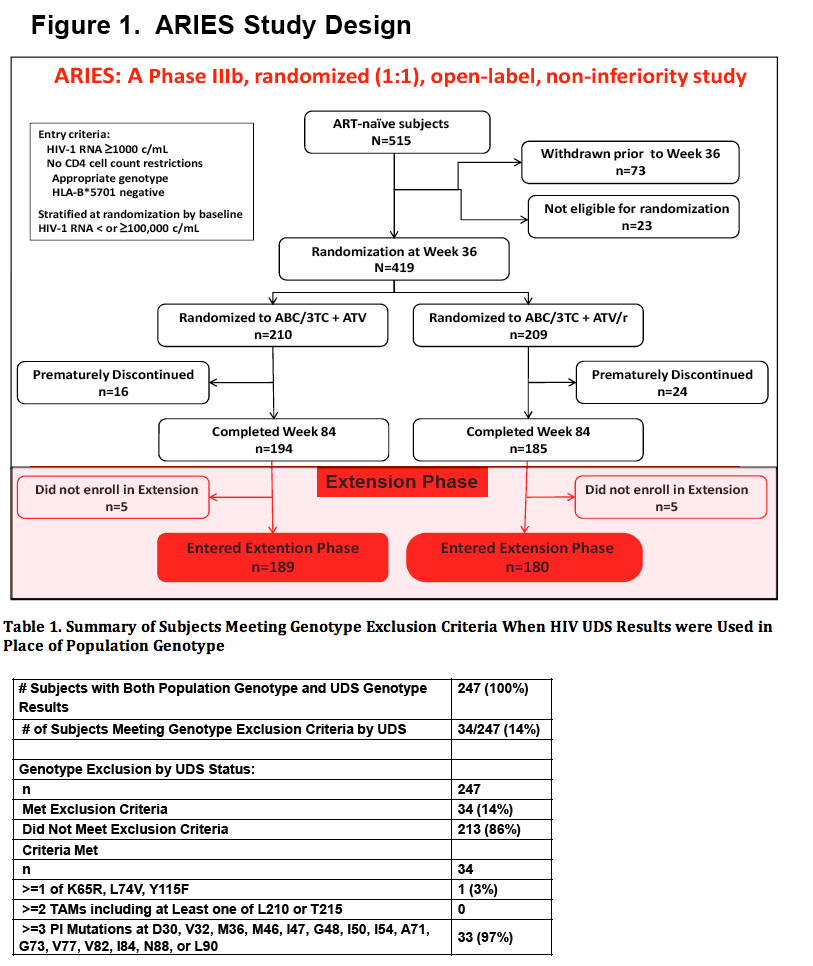
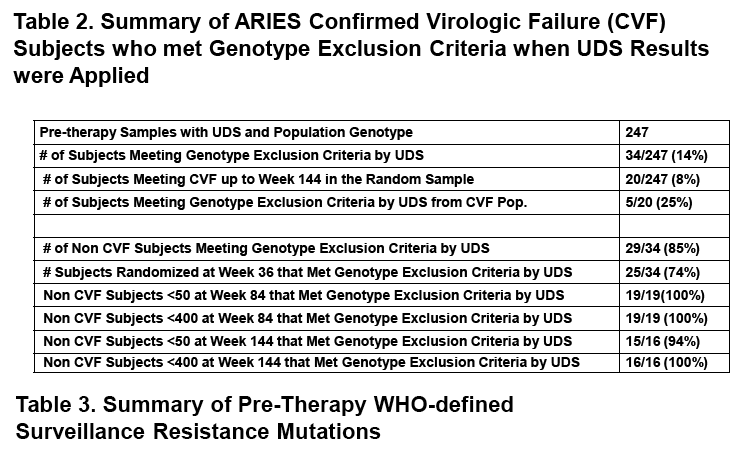
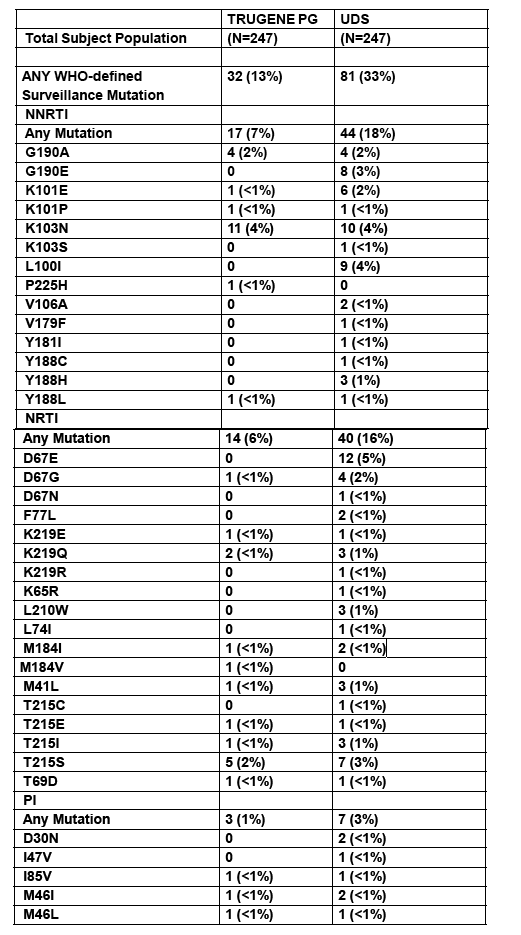
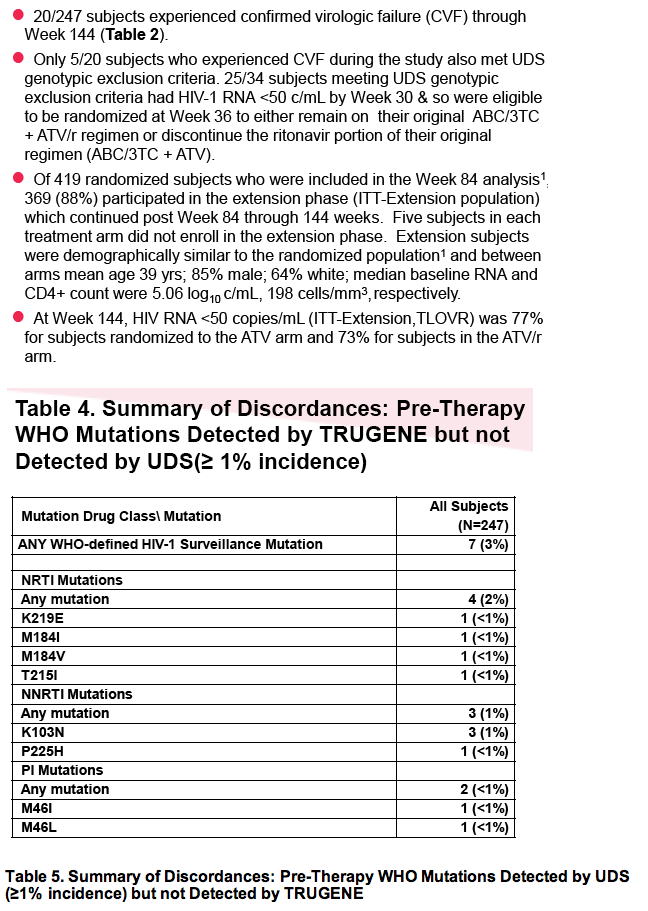
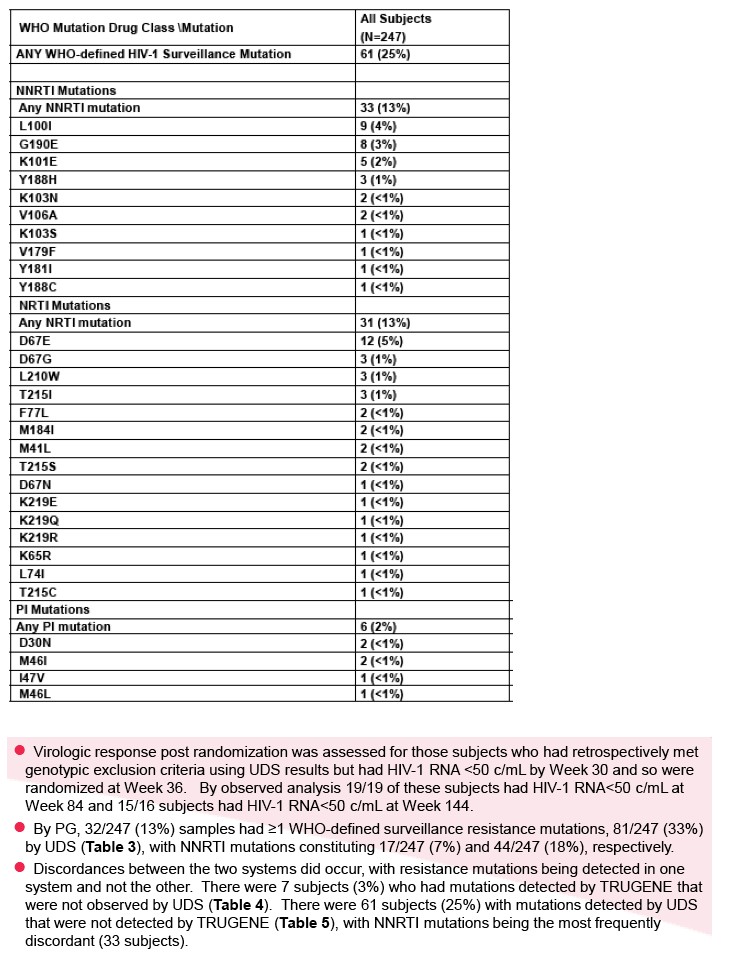
References
1. Squires KE, etal. Safety and efficacy of a 36-week induction regimen of abacavir/lamivudine and ritonavir-boosted atazanavir in HIV-infected patients. HIV Clin Trials. 2010 Mar-Apr;11(2):69-79.
2. Squires KE, etal. Similar efficacy and tolerability of atazanavir compared with atazanavir/ritonavir, each with abacavir/lamivudine after initial suppression with abacavir/lamivudine plus ritonavir-boosted atazanavir in HIV-infected patients. AIDS. 2010 24 (13):2019-2027.
|
| |
|
 |
 |
|
|